When it comes to weight loss, the phrase “processed food” tends to set off alarm bells—and often for good reason. We’re taught to fear the frozen, the canned, and the packaged, associating them with chemicals, empty calories, and ultra-refined ingredients that stall progress and sabotage health. But here’s the twist: not all processed foods are created equal. In fact, some of them might just be the secret weapon you’re overlooking in your fight against fat.
Yes, you read that right. There’s a whole class of minimally processed, nutrient-packed foods that are not only convenient but also support satiety, metabolism, and fat loss—without the guilt. These aren’t sugar-loaded snack cakes or sodium-packed mystery meals. We’re talking about dietitian-approved options like protein-rich Greek yogurt, fiber-filled canned beans, and omega-3-loaded canned tuna—foods that have undergone light processing to extend shelf life or enhance safety, but still retain their nutritional punch.
So why do they work? It comes down to balance. These smart pantry and fridge staples offer the holy trinity of weight loss: protein to build lean muscle and boost calorie burn, fiber to keep you full and satisfied, and essential nutrients that help your body function at its best. And the best part? They fit into real life—no complicated recipes, no boutique grocery store trips, and no sacrificing flavor for results.
If you’ve been thinking of processed food as the enemy, it’s time for a reality check. With the right choices, you can save time, trim your waistline, and even enjoy the ride. Ahead, we’ve rounded up 12 processed foods that experts swear by for burning fat and keeping cravings in check. You might just be surprised by what makes the list.
1. Canned Beans
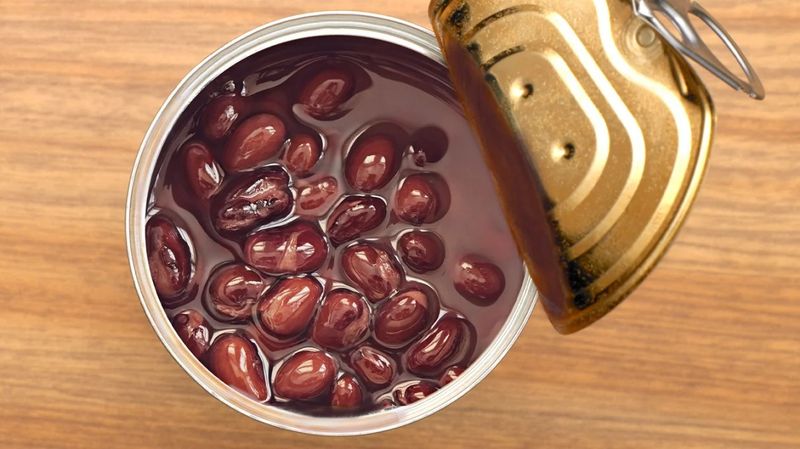
These pantry powerhouses deliver an impressive nutritional punch without breaking your budget. A single serving provides up to 7 grams of protein and 6 grams of fiber, creating that perfect fullness factor that keeps snack attacks at bay.
Always rinse canned beans thoroughly under cold water to wash away up to 40% of the added sodium. This simple step transforms them into an even healthier option.
Black, kidney, or garbanzo varieties can be tossed into salads, mashed for dips, or added to soups for an instant nutrition boost. Their complex carbohydrates release energy slowly, helping maintain steady blood sugar levels throughout the day.
2. Plain Greek Yogurt
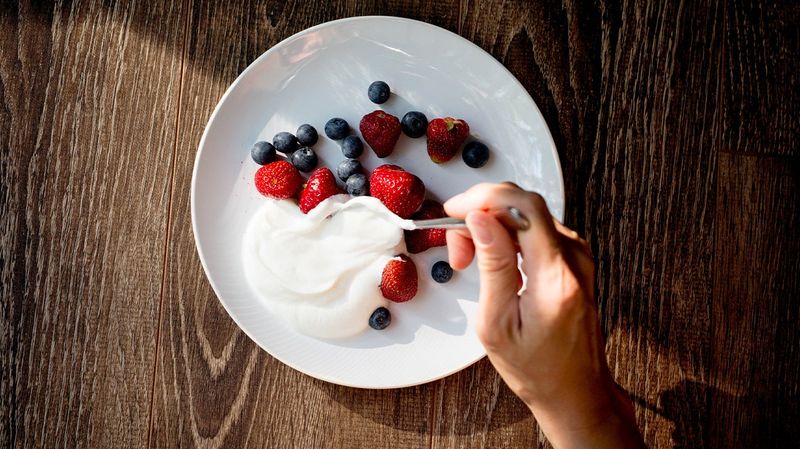
Creamy, tangy, and surprisingly versatile, Greek yogurt contains nearly double the protein of regular yogurt. The straining process removes much of the liquid whey, concentrating the protein to about 15-20 grams per cup while keeping calories reasonable.
The protein-fat combination triggers hormones that signal fullness to your brain, helping you stay satisfied between meals. Plus, those live active cultures support gut health, which emerging research links to better weight management.
Skip the flavored varieties loaded with added sugars. Instead, sweeten plain Greek yogurt naturally with fresh berries, a drizzle of honey, or a sprinkle of cinnamon for a metabolism-supporting treat any time of day.
3. Frozen Fruits
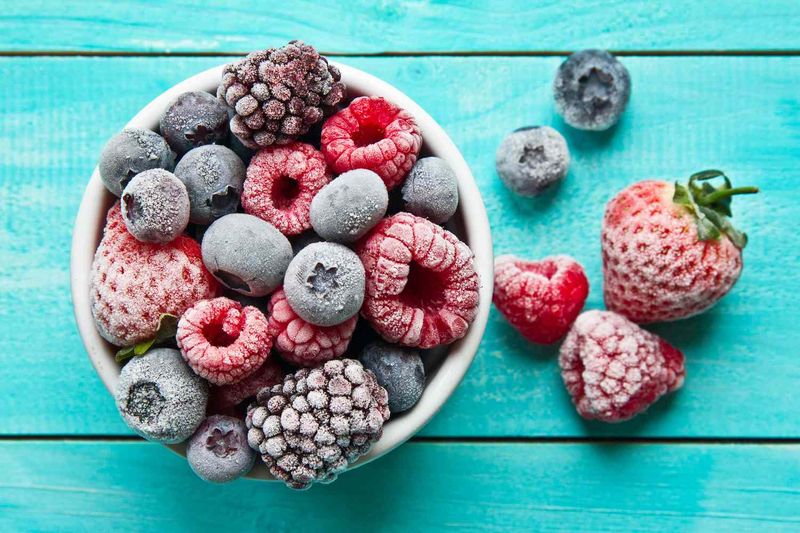
Bursting with natural sweetness, frozen fruits offer the perfect solution when fresh produce isn’t available. Harvested at peak ripeness and flash-frozen within hours, they often contain more nutrients than their “fresh” counterparts that traveled days to reach store shelves.
The freezing process locks in vitamins and minerals while preserving the fiber that slows digestion and prevents blood sugar spikes. This fiber also expands in your stomach, creating a physical feeling of fullness. Frozen berries particularly shine in the weight management department.
Their low calorie count and high water content make them satisfying while their natural sweetness helps tame dessert cravings without added sugars.
4. Unsweetened Soymilk
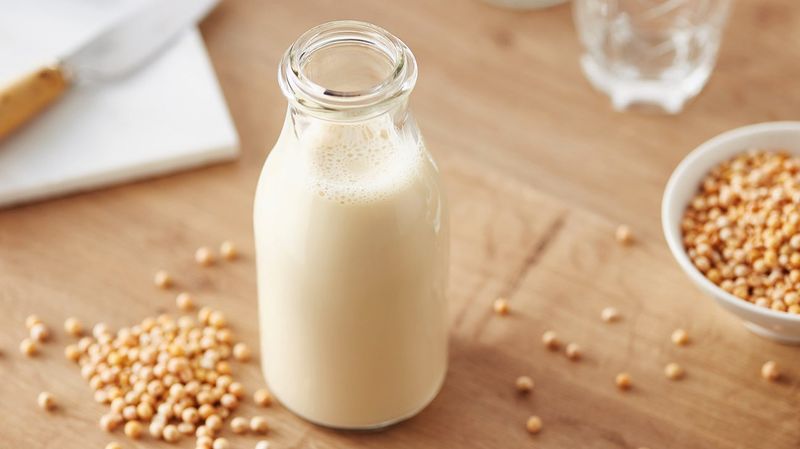
Silky smooth and subtly nutty, unsweetened soymilk stands out among plant-based milks. With about 7 grams of complete protein per cup, it’s the closest plant alternative to cow’s milk nutritionally.
The protein-rich profile helps preserve lean muscle mass during weight loss—crucial since muscle burns more calories than fat, even at rest. Most brands come fortified with calcium and vitamin D, nutrients that some research suggests may play roles in fat metabolism.
Unsweetened varieties contain just 80-90 calories per cup, making them substantially lighter than whole milk. Use it anywhere you’d use dairy milk: smoothies, oatmeal, coffee, or even homemade puddings for a satisfying treat that won’t derail your health goals.
5. Tofu
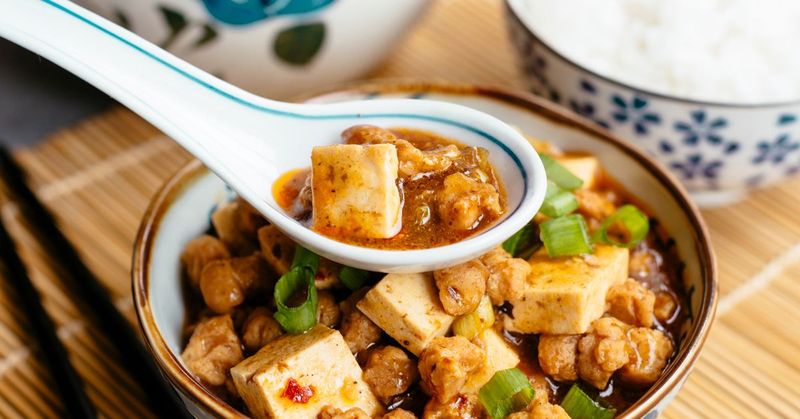
Humble yet mighty, tofu absorbs the flavors of whatever it’s cooked with while delivering impressive nutritional benefits. A half-cup serving packs about 10 grams of complete protein—containing all nine essential amino acids—for just 90 calories.
Research suggests plant proteins like tofu may help reduce inflammation and boost metabolism. The isoflavones in soy might also support hormonal balance, potentially benefiting weight management efforts.
Firm varieties can be cubed for stir-fries or sliced for grilling, while silken tofu blends seamlessly into smoothies for added creaminess and staying power. Store opened tofu in water, changing it daily to maintain freshness for up to a week.
6. Dry-Roasted Unsalted Peanuts
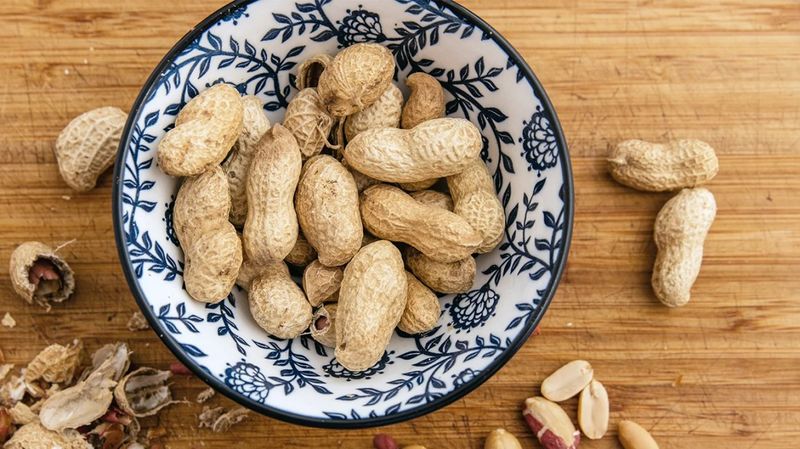
Small but mighty, these legumes (yes, peanuts are technically legumes, not nuts!) pack a powerful nutritional punch. Just a small handful delivers fiber, protein, and heart-healthy monounsaturated fats—the perfect trio for keeping hunger at bay.
Research published in the Journal of Nutrition found that people who regularly consumed peanuts maintained healthier weights over time. The satisfying crunch and nutrient density mean a little goes a long way.
Portion control matters here—aim for about a quarter cup (a small handful). Keep single-serving containers ready for grab-and-go snacking that satisfies without derailing your healthy eating efforts. Their portable nature makes them perfect for combating vending machine temptations.
7. Whole-Food Veggie Burgers
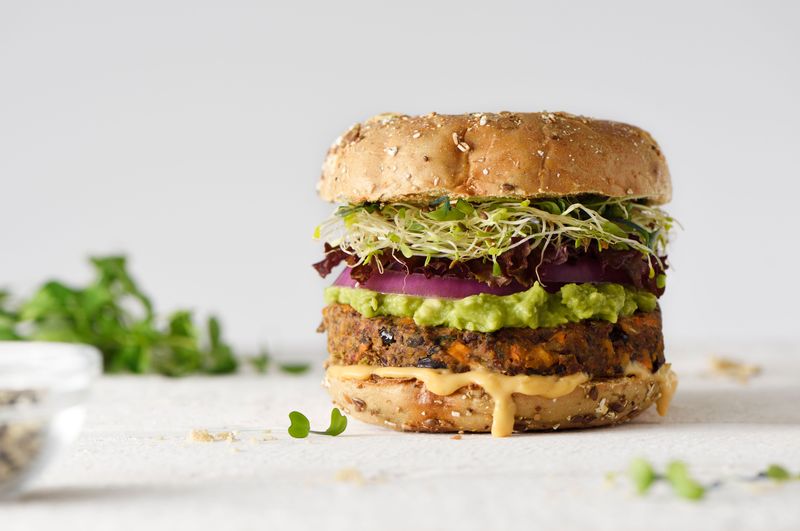
Not all veggie patties deserve health halos! The nutrition superstars feature whole foods like black beans, quinoa, and vegetables as their first ingredients—not isolated soy proteins or excessive fillers.
These plant-powered options typically provide 10-15 grams of fiber-rich protein per patty while staying under 200 calories. The fiber creates lasting fullness, while the complex carbohydrates provide steady energy without blood sugar crashes that trigger cravings.
Look for varieties with recognizable ingredients and reasonable sodium levels (under 400mg per patty). Serve on a bed of greens or with a single whole-grain bun and plenty of fresh vegetables for a satisfying meal that supports your weight management goals without sacrificing flavor.
8. High-Fiber Crackers

Forget those empty-calorie white crackers! Their fiber-rich cousins offer satisfying crunch with impressive nutritional benefits. Made from whole grains like rye, oats, or flax, these crackers contain complex carbohydrates that digest slowly, preventing the blood sugar rollercoaster that leads to cravings.
The fiber content—look for at least 3 grams per serving—helps create physical fullness while feeding beneficial gut bacteria. Emerging research suggests a healthy gut microbiome may play a role in weight regulation and metabolism.
Pair these crunchy bites with protein sources like hummus or cottage cheese for a balanced snack that keeps hunger at bay for hours. The combination of fiber and protein provides the perfect one-two punch against mindless munching.
9. Hummus
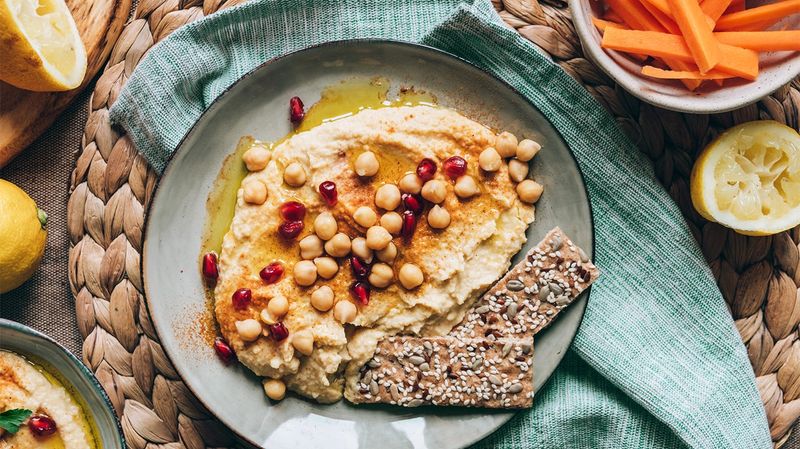
Velvety smooth with a garlicky kick, this Middle Eastern spread combines chickpeas, tahini, olive oil, and lemon juice into a nutritional powerhouse. The fiber-protein combination creates lasting satiety while the healthy fats from olive oil and tahini slow digestion and absorption.
Research from a 2020 study found that regular chickpea consumers had 53% lower odds of being obese compared to non-consumers. The soluble fiber in chickpeas forms a gel-like substance in your digestive tract that slows digestion and helps control appetite.
Traditional varieties contain about 70 calories per two-tablespoon serving. Try it as a sandwich spread instead of mayo, as a veggie dip, or even as a creamy pasta sauce base for a Mediterranean twist that supports your weight goals.
10. Fortified Whole-Grain Cereals
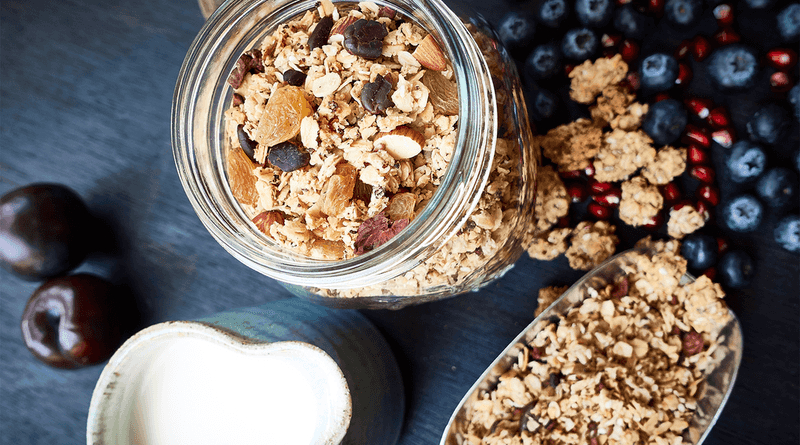
The cereal aisle can be a nutritional minefield, but certain options stand out as genuine health allies. Look for varieties listing whole grains as the first ingredient and containing at least 5 grams of fiber per serving with minimal added sugar (under 5 grams).
Many are fortified with B vitamins, which play essential roles in energy metabolism. The combination of complex carbohydrates and fiber provides sustained energy while preventing mid-morning hunger pangs. Studies show regular whole grain consumers tend to have lower body weights and less abdominal fat.
Top your bowl with milk or yogurt for protein, and add berries for extra fiber and antioxidants—creating a complete breakfast that powers your morning while supporting your weight management goals.
11. Canned Tuna
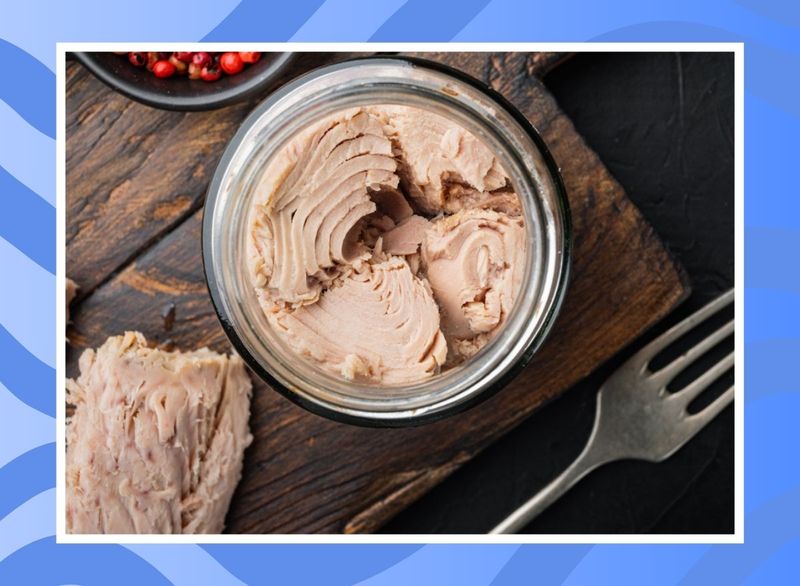
Affordable, convenient, and incredibly lean, canned tuna delivers premium nutrition without premium prices. A single 3-ounce serving packs about 20 grams of high-quality protein for just 100 calories, making it one of the most protein-dense foods available.
That protein serves double duty in weight management—it requires more energy to digest than carbs or fats (boosting metabolism) while preserving lean muscle mass during weight loss. The omega-3 fatty acids in tuna may also help reduce inflammation and improve insulin sensitivity.
Choose water-packed varieties with “light” or “skipjack” on the label for lower mercury levels. Limit consumption to 2-3 servings weekly and mix with Greek yogurt instead of mayo for a protein-packed sandwich filling or salad topper.
12. Air-Popped Popcorn
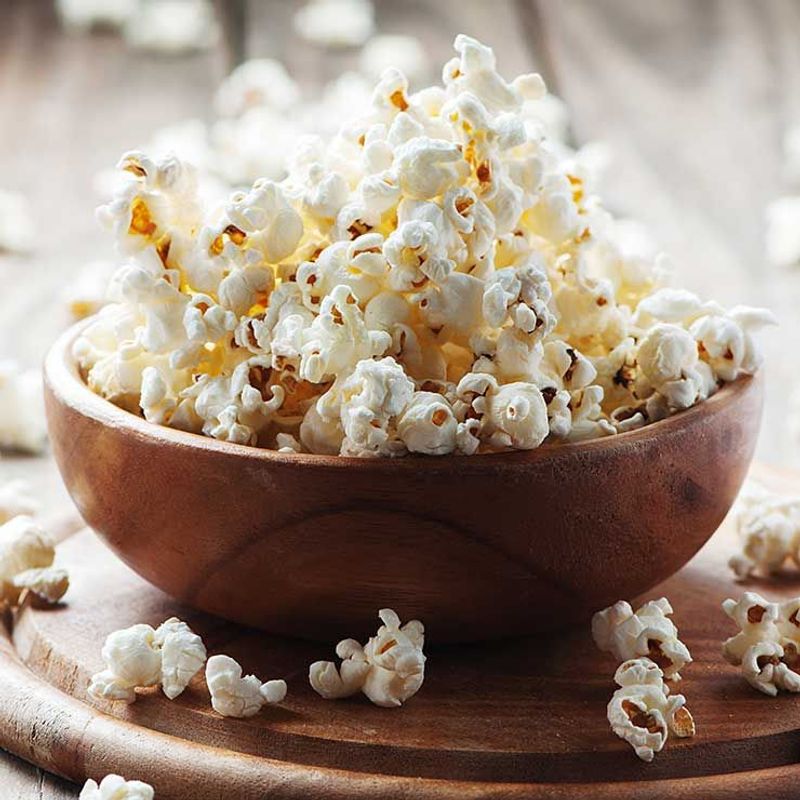
Surprisingly nutritious, popcorn is actually a whole grain that satisfies the need to munch without derailing healthy eating plans. Three cups of air-popped popcorn contain just 100 calories while providing 3.5 grams of fiber and even small amounts of protein.
The magic lies in popcorn’s volume—it takes up significant space in your stomach, triggering stretch receptors that signal fullness to your brain. Research shows people feel more satisfied after eating popcorn compared to the same calorie amount of potato chips.
Skip the butter-drenched movie theater versions. Instead, make your own by air-popping kernels and lightly seasoning with herbs, nutritional yeast, or a minimal spray of olive oil. The result? A guilt-free snack that feels indulgent while supporting your weight management goals.
Leave a comment